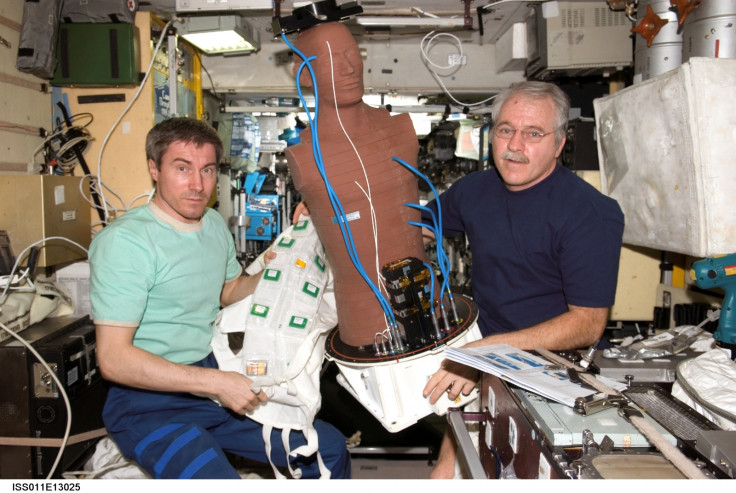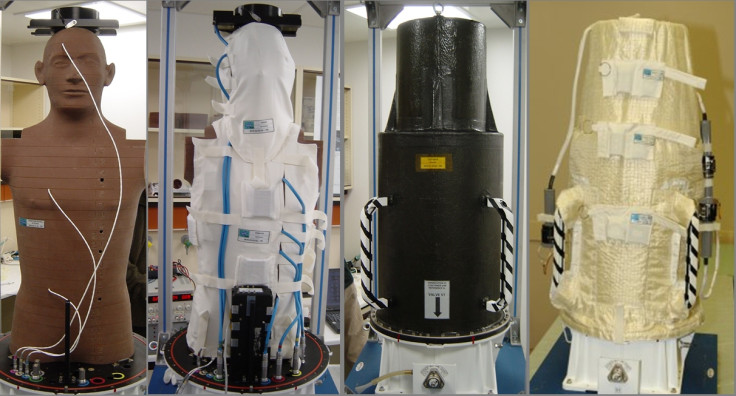Space travel safer than believed but radiation hazards remain, concludes humanoid study

In terms of radiation hazard, space travel, as recently popularised by Hollywood blockbuster Interstellar, is not as risky as presumed, but it is not a joy ride either. The radiation doses are dangerously high.
That is what data from a space experiment called Matroshka reveals.
It measured effects of long-term exposure of astronauts to cosmic radiation by using a humanoid phantom and showed that effective doses related to health risk were lower than those indicated by dosimeters worn by the astronauts.
Cosmic radiation is a major hazard to astronauts and high exposure can lead to cancer.
The phantom, in which real human bones were placed inside a plastic "body" simulating the shapes and densities of soft tissues or lungs in the human body, was used to measure doses of cosmic radiation.
One may say that we found open space to be a bit less hostile to humans than expected.
A three-dimensional rectangular grid of measurement points was created inside the phantom by 6,000 thermoluminescent detectors to accurately determine the spatial distribution of dose.
The detectors are thin white tiny pellets of doped lithium fluoride. The dopants create forbidden energy levels in the material, attracting free electrons from cosmic radiation.
When the electrons are freed by heating, the energy released in light they emit gives a measure of electrons trapped.
The doses from radiation were measured by placing the phantom inside and outside the space station.
While on earth most natural sources produce gamma ray radiation, in space cosmic radiation sees heavier protons or ions dominate and these are more cancer-causing.
The phantom's detector was equipped to distinguish between the two kinds of radiation.
Five-year experiment
Between 2004 and 2009, the Matroshka mannequin underwent three exposures to cosmic radiation, each lasting a year of more.
Analysis of the complete data set gathered was done by teams at the IFJ PAN in Kraków, the German Aerospace Center (DLR) in Cologne and at the Technical University of Vienna.
They found that the individual dosimeters worn by the crew inside the ISS overestimated the actual dose measured inside the phantom by about 15%. However, in open space this overestimation exceeded 200%.
The European Space Agency (ESA), in collaboration with research institutions from Germany, Poland, Austria, Sweden and Russia, designed and carried out the Matroshka experiment.
The experiment is relevant as the human race sets its sights on distant worlds. After sending voyagers beyond the solar system, probes to many planets, landing one on a comet, and now studying manned mission to Mars, space travel is picking up pace.
However, as the study notes, radiation dangers outside the safe belt of the earth where the magnetosphere protects against cosmic rays will be among the main challenges to astronauts.

© Copyright IBTimes 2025. All rights reserved.





















